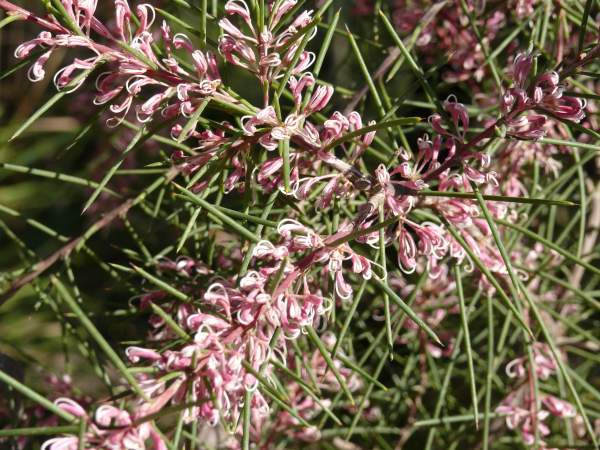Array
(
[0] => Array
(
[id] => 463
[is_published] => 1
[websiteID] => 5
[url] => /gardening/plant-finder/search-results.php
[page_status] => Published
[number_of_ads] => 2
[can_use_editor] => 0
[last_modified_date] =>
[last_modified_by] => Alan
[checked_for_duplicate_content] =>
[title] => Plant search results (not used)
[heading] => Plant search results (not used)
[meta_description] => (not used)
[article_category_1] => Gardening
[article_category_2] => Landscaping
[article_category_3] =>
[article_category_4] =>
[article_category_5] =>
[business_category_1] => Landscaper
[business_category_2] => Garden Maintenance
[business_category_3] =>
[business_category_4] =>
[business_category_5] =>
[number_of_google_mrecs] => 0
[show_google_ad_bottom_of_page] => 1
[show_get_quotes_top_of_page] => 0
[show_get_quotes_rhs_of_page] => 0
[show_directory_search_widget] => 0
[show_trending_content_widget] => 0
[show_facebook_widget] => 0
[show_further_reading_section] => 0
[show_sponsors_section] => 0
[show_top_article_ad] => 0
)
[1] => Array
(
[id] => 8
[is_published] => 1
[websiteID] => 5
[url] => /landscaping/choosing-a-fence.php
[page_status] => Published
[number_of_ads] => 4
[can_use_editor] => 1
[last_modified_date] => 2013-09-10 00:00:00
[last_modified_by] => Alan
[checked_for_duplicate_content] =>
[title] => How to choose a new fence
[heading] => How to choose a new fence
[meta_description] => Five important tips on how to choose a fence.
[article_category_1] => Landscaping
[article_category_2] =>
[article_category_3] =>
[article_category_4] =>
[article_category_5] =>
[business_category_1] => Landscaper
[business_category_2] => Nursery
[business_category_3] => Garden Designer
[business_category_4] => Landscape Architect
[business_category_5] =>
[number_of_google_mrecs] => 1
[show_google_ad_bottom_of_page] => 1
[show_get_quotes_top_of_page] => 1
[show_get_quotes_rhs_of_page] => 1
[show_directory_search_widget] => 1
[show_trending_content_widget] => 1
[show_facebook_widget] => 1
[show_further_reading_section] => 1
[show_sponsors_section] => 0
[show_top_article_ad] => 1
)
[2] => Array
(
[id] => 410
[is_published] => 1
[websiteID] => 5
[url] => /articles/external-privacy-screens.php
[page_status] => Published
[number_of_ads] => 2
[can_use_editor] => 1
[last_modified_date] => 2013-09-10 00:00:00
[last_modified_by] => Alan
[checked_for_duplicate_content] =>
[title] => External privacy screens
[heading] => External privacy screens
[meta_description] => External privacy screens began to appear in Australian residential and commercial building during the 1950's and 1960's, as a direct result of high density living and higher incomes. For more information and some examples read this article.
[article_category_1] => Landscaping
[article_category_2] =>
[article_category_3] =>
[article_category_4] =>
[article_category_5] =>
[business_category_1] => Landscaper
[business_category_2] => Nursery
[business_category_3] => Garden Designer
[business_category_4] => Landscape Architect
[business_category_5] =>
[number_of_google_mrecs] => 1
[show_google_ad_bottom_of_page] => 1
[show_get_quotes_top_of_page] => 1
[show_get_quotes_rhs_of_page] => 1
[show_directory_search_widget] => 1
[show_trending_content_widget] => 1
[show_facebook_widget] => 1
[show_further_reading_section] => 1
[show_sponsors_section] => 1
[show_top_article_ad] => 1
)
[3] => Array
(
[id] => 425
[is_published] => 1
[websiteID] => 5
[url] => /landscaping/diy-retaining-walls.php
[page_status] => Published
[number_of_ads] => 5
[can_use_editor] => 1
[last_modified_date] => 2013-09-10 00:00:00
[last_modified_by] => Alan
[checked_for_duplicate_content] =>
[title] => DIY Retaining Walls
[heading] => DIY Retaining Walls
[meta_description] => Learn about building a retaining wall for your garden. This article explains your options.
[article_category_1] => Landscaping
[article_category_2] =>
[article_category_3] =>
[article_category_4] =>
[article_category_5] =>
[business_category_1] => Landscaper
[business_category_2] => Garden Maintenance
[business_category_3] => Garden Supplies
[business_category_4] => Garden Designer
[business_category_5] => Garden Tools
[number_of_google_mrecs] =>
[show_google_ad_bottom_of_page] => 1
[show_get_quotes_top_of_page] => 1
[show_get_quotes_rhs_of_page] => 0
[show_directory_search_widget] => 1
[show_trending_content_widget] => 0
[show_facebook_widget] => 1
[show_further_reading_section] => 1
[show_sponsors_section] => 0
[show_top_article_ad] => 1
)
)
Helpful articles
Plant search results (not used). (not used).
How to choose a new fence. Five important tips on how to choose a fence.
External privacy screens. External privacy screens began to appear in Australian residential and commercial building during the 1950's and 1960's, as a direct result of high density living and higher incomes. For more information and some examples read this article.
DIY Retaining Walls. Learn about building a retaining wall for your garden. This article explains your options.
Plant description
Hakea 'Pink lace' is a medium sized shrub with a graceful weeping habit, and sweetly perfumed multi-hued pink flowers in winter and spring. It provides a perfect habitat for many small native birds, including honeyeaters, wrens and thornbills, as it has quite prickly foliage. Great screen plant. Good for cool temperate to subtropical climate zones. Tolerates very frosty conditions and coastal positions. Feed with a low phosphorus native fertiliser in spring.
Further reading: Top ten native plants and
Best natives for pots and small gardens (articles written by native plant expert and horticulturalist Angus Stewart).
Additional plant information
Flowers
Flower colour: pink
Flowering season: spring winter
Scent
The flowers are sweetly scented
Plant size
Maximum height: 2.2 metres
Minimum height: 1.8 metres
Maximum width: 2 metres
Minimum width: 1.5 metres
Sunlight, frost & salt tolerance
This plant will tolerate full or partial sunlight.
Medium frost tolerance.
Plant is salt tolerant.
Fauna attracting?
Yes. Attracts: birds.
Climate
This plant species will grow in the following climates: cool, temperate, subtropical.
Soil types & conditions
Loam: well-drained.
Clay: not suitable.
Sand: well-drained.
Miscellaneous information
Native to: Australia.
Planting season: Any.
Types of fertiliser: Low phosphorus native fertiliser.
Find a nursery
Search for another plant

